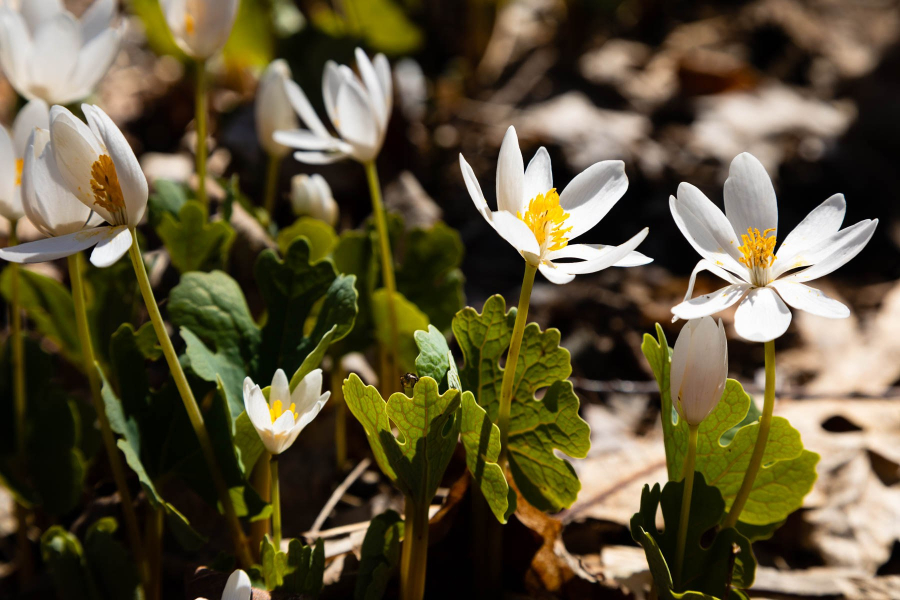The bloodroot plant is so much more than just an early spring flower
The bloodroot plant possesses a bright red sap sometimes used as a natural dye

Bloodroot, a native plant that blooms in early spring all throughout the Chesapeake watershed, is so much more than meets the eye. Before blooming, it looks like a simple, leafy plant. But when spring comes around bloodroot erupts with pollen-rich white flowers and a reddish-orange sap that can be used as a natural dye!
Bloodroot blooms in early spring, from March to April, although the leafy base of the plant can still be found throughout the summer months. The plant’s flowers contain pollen but no nectar, since the insects that prefer nectar are not active when the plant blooms. Bloodroot’s flowers will also open and shut based on when pollinators are active—opening when it’s sunny and shutting when it’s dark or cloudy.
Inside of the bloodroot is a reddish-orange sap that is especially thick at its root base. Historically, indigenous communities in eastern North America have used this sap as a natural dye for clothing and baskets, as well as face paint. The plant is said to have been used by indigenous people and early European colonists to treat coughs and skin ailments, though modern medical institutions warn about dangerous side effects related to uncontrolled use.
The bloodroot also has an interesting way of reproducing. After the plant is pollinated, seed pods will develop under the leaves and then split open and scatter seeds containing a food called elaiosomes that is attractive to ants. Ants eat the elaiosomes, then digest and disperse the seeds which spreads bloodroot to other areas.
As a native plant, bloodroot is often preferred by local pollinators and has deeper roots soaking up more runoff, which keeps our waterways clean.
Next time you spot bloodroot in the wild, make sure to take a moment to admire their versatility!

Comments
Very informative and interesting!
Thank you!
Your comment has been received. Before it can be published, the comment will be reviewed by our team to ensure it adheres with our rules of engagement.
Back to recent stories